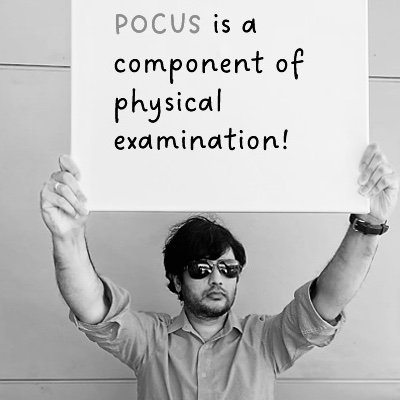
Claudio Sandroni
@ClaudioSandron3
Followers
259
Following
110
Media
33
Statuses
161
I love sharing what I learn every day. ICU doctor, teacher, investigator. Passionate about #criticalcare, #resuscitation, #emergencymedicine, #cardiacarrest.
UCSC University Rome, IT
Joined March 2022
We found that organs transplanted after CPR have comparable outcomes than organs from donors who did not receive CPR. Kidneys and livers donated from brain-dead donors following CPR had better outcomes than those from uncontrolled DCD. https://t.co/yNdVdXvrD4~
0
0
0
In post-cardiac arrest #coma, the ERC-ESICM 2021 algorithm is 100% specific for poor outcome prediction, and in patients with indeterminate outcome, favourable signs predict recovery with 99% specificity! Online on Resuscitation https://t.co/xiLIh4h8Aj
3
22
67
In patients with acute myocardial infarction and preserved (>49%) ejection fraction who underwent early coronary angiography, beta-blockers do not improve survival or decrease the rate of new infarction. Today on NEJM: https://t.co/PNVkGNujYE
nejm.org
Most trials that have shown a benefit of beta-blocker treatment after myocardial infarction included patients with large myocardial infarctions and were conducted in an era before modern biomarker-...
0
0
2
This is an excellent case discussion for those - like me - who are passionate of #cardiacarrest and #resuscitation: A 55-Year-Old Man with Cardiac Arrest, Cardiogenic Shock, and Hypoxemia | New England Journal of Medicine
nejm.org
A 55-year-old man had an out-of-hospital cardiac arrest. An evaluation showed 2-mm ST-segment elevations in the inferior leads on electrocardiography, cardiogenic shock, and a new systolic ...
0
4
16
During #sleep, the synchronous neuronal electrical activity produces rhythmic waves that flush CSF washing out waste. Stopping these waves leads to waste accumulation. Are we close to understanding why we sleep and why sleep deprivation is harmful? https://t.co/DBrnB8KLIS
0
4
9
In a retrospective observational study, up to 25% of patients admitted to the ICU with presumed #sepsis had noninfectious diagnoses (i.e., sepsis mimics). https://t.co/ax14UKV6Yf
#MedTwitter
1
10
29
In adult patients undergoing emergent or elective surgery Glidescope laryngoscopy is associated with fewer intubation attempts and fewer intubation failures (0.3 vs 4.0%) than direct laryngoscopy with McIntosh blade. Today on JAMA https://t.co/zAgfSAknKR
0
2
3
Neurological conditions now leading cause of ill health and disability globally, affecting 3.4 billion people worldwide, suggests GBD study in @TheLancetNeuro 🔗 https://t.co/bEuxuX0FKm
7
284
426
Adolf Hitler was “a good patient,” according to his doctors. He was meticulously adherent to the regimen for his chronic sinusitis: cocaine in aerosol form. Hitler’s drug use was of epic proportions. In addition to cocaine, the German Fuhrer also took amphetamines, sedatives,
2K
5K
23K
In a meta-analysis of 32 582 patients from 89 studies, females were significantly more at risk of dying from S. Aureus bacteraemia than males (pooled adjusted OR, 1.18; 95% CI, 1.11-1.27). https://t.co/9A57dtvb4N
jamanetwork.com
This systematic review and meta-analysis of studies on outcomes for patients hospitalized with Staphylococcus aureus examines the association of mortality with female sex.
0
0
1
Therapeutic antibiotic concentrations in children & adults with #sepsis in #ICU ⏱️Bayesian dosing software reduced time to achieve target ABT exposures in those who failed to achieve target exposure in first 24h 🪦no difference in in-hospital mortality 🔓 https://t.co/WdZctSQW6X
0
11
47
14 Recommendations on the use of intravenous albumin, from the International Collaboration for Transfusion Medicine Guidelines. Pre-proof available on the Chest website.
0
1
1
Hematologic malignancies in 7 🇨🇦 ICUs 🔍most common reasons for admission ARF/#sepsis 🔍improved, but still high #ICU/post ICU mortality 🔍survival varied based upon diagnosis & frailty status 🔍functional disability & impairment in well-being reported 🔓 https://t.co/dJ5VNVDS4T
0
24
68
Managing acute mesenteric ischaemia, review summarizing recent evidence related to: ⏱️ (timely) diagnosis ⚙️ (multidisciplinary) management ⚖️ outcome Awareness, allowing adequately raised/shared suspicion followed by early approach, pivotal! #FOAMcc 🔓 https://t.co/MI8IP5blyH
0
76
190
Impressive results from the KARDIA-1 RCT. In hypertensive adults, a single shot of the silencing RNA zilebesiran lowered SBP by 10 mmHg for 90 days. Future effects if patients develop #hypovolaemia or #shock?🤔 https://t.co/5dAjmAooGK
0
1
2
The rate of immunosuppression in US adults is 6.6% (7.9% in women) in this survey. Sample >29,000. Response rate 53%. Limitations: self-reported; causes not investigated. Today on JAMA: https://t.co/GpoqfSg0En
0
0
0
Screams in ambulance service. Can scheduling PLEASE see this?!
19
28
416
0
77
217
In the ACORN randomised trial on 2511 adults with acute #infection in ED or ICU at enrollment, #Piperacillin_Tazobactam (bolus + ext. infusion) was not associated with higher AKI rates vs. Cefepime (10.2 vs. 8.8%). https://t.co/G2bCckLre7
0
1
1









